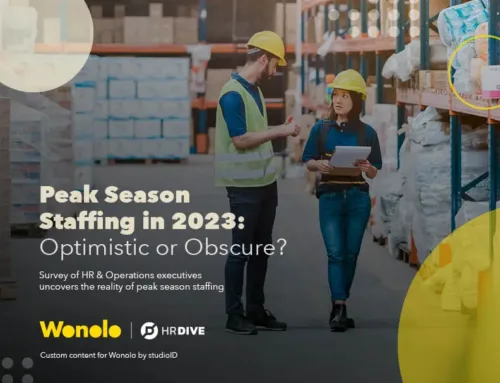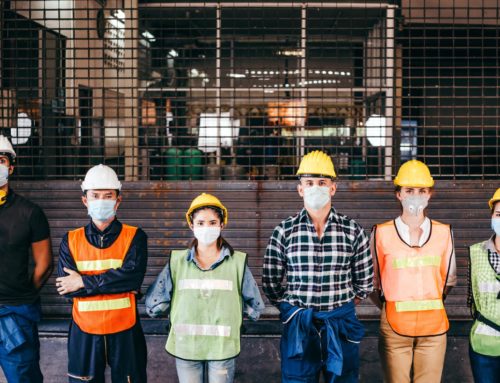Lori Macias
What a difference a year makes.
The hospitality industry was hit hard by the COVID-19 pandemic in 2020.
This year, the industry has rebounded, and customers are making up for lost time.
Demand for Hospitality Goods and Services Has Increased for the 2021 Holiday Season
Travel and Lodging
COVID-19 issues led to a dismal 44% hotel occupancy rate in 2020, 33% less than 2019, according to the U.S. Travel Association. In December 2020, luxury hotels had a 21% occupancy rate, compared to 68% in 2019.
Now that many people have been vaccinated, and missed spending the 2020 holiday season with distant family and friends, there has been a surge of activity in travel. Reservations for the 2021 holiday season at some hotels were almost fully booked by September, 2021.
CNBC reported on one of those hotels – Florida’s Palm Beach Marriott Singer Island Beach Resort & Spa. A spokesperson from the hotel said that over 90% of its hotel rooms were booked by early September for the December holiday period.
Short-term holiday season rental reservations have also increased dramatically this year. According to figures compiled by property management software company Guesty and reported in the Los Angeles Times, U.S. Thanksgiving short-term rentals are up 302% compared with 2020, and 93% from 2019. Christmas short-term rental bookings are even more astounding, with an increase of 469% in bookings compared with 2020, and 157% more than 2019.
Prices have also gone up. Thanksgiving short-term rental rates have increased 19% from 2020 and 58% from 2019. Christmas rental rates have increased 53% from 2020, and 80% from 2019.
Restaurants
Restaurants also experienced devastating losses during the pandemic. According to a report by the National Restaurant Association, at the end of 2020, the restaurant industry’s total sales were $240 billion below the Association’s pre-pandemic 2020 forecast.
In 2021, food and beverage sales in the restaurant and foodservice industry are projected to total $789 billion, an increase of 19.7% from 2020, according to the National Restaurant Association Releases 2021 Mid-Year State of the Restaurant Industry Update. The holiday season is typically a busy time for restaurants, and will likely see a large part of that increase.
The nature of those sales, however, has changed due to the pandemic. While 57.7% of respondents in a March, 2021 Buyers Edge Platform survey said they still prefer dining in, takeout and delivery skyrocketed during the pandemic. In the same survey, 46% of respondents said they ordered more carry out and delivery during the pandemic, and 33% said they plan to order more food from restaurants in the next 12 months.
As with the travel and lodging industry, menu prices have also increased. As reported in Grub Street, the annual menu inflation rate is generally about 2.5 percent. Yet prices at full-service restaurants rose 4.3 percent in the past year, which is the largest 12-month increase ever recorded.
Events and Parking
Pent-up demand for in-person events, COVID-19 vaccines, and relaxed in-person restrictions have led to a strong rebound for U.S. events and parking. June 2021 was the first month since before the pandemic that the event industry was predicted to bring in more than a billion dollars, according to an article in Vox. Concerts, festivals, and sporting events, as well as business conferences and expos, have continued to increase bookings throughout the third and fourth quarter of 2021.
Hospitality Industry Labor Shortages Amid Strong Demand for Workers
The increased demand for hospitality goods and services has led to a large demand for seasonal hospitality workers, but the industry faces severe labor shortages.
Travel and Lodging
The American Hotel and Lodging Association reports that 3.1 million jobs in leisure and hospitality were lost during the pandemic. As a result, many workers found jobs in other industries. In addition, according to hospitalitynet, studies show that most workers in the hospitality industry, especially entry-level workers, aren’t willing to perform the types of jobs they were originally working. Hospitality Technology notes that staffing shortages coupled with an increase in bookings is contributing to worker burnout. Low wages and the lack of flexibility in the industry make it hard to find and keep workers.
Restaurants
While staffing in the restaurant industry has been steadily increasing in 2021, as of June, according to The National Restaurant Association, the industry has lost almost one million jobs since the advent of COVID-19. More workers are now needed, but both the restaurant and travel/lodging categories have some of the highest levels of unfilled job openings of any industry. In fact, 75% of restaurant operators said that recruiting was their top challenge as of June 2021, the highest level ever reported.
Events and Parking
As in-person events were canceled for the past 18 months, event and parking workers likely found jobs with other companies. Venues and event companies will often need to start from scratch to find workers who can set up, decorate, greet, provide food and beverages, take tickets, and park vehicles. In addition, housekeeping and janitorial services will be a priority, to help people feel comfortable that indoor and outdoor surfaces are cleaned and sanitized.
Earnings for Hospitality Industry Workers
Lower supply and higher demand has pushed job pay up for hospitality workers throughout 2021. In August, 2021, the average hourly rate for production and nonsupervisory employees was $17.84 in the accommodations sector, $15.76 for food service workers, and $16.50 for amusement and recreation workers.
Those figures are quite different from 2020 hourly rates:
Lodging Businesses – Earnings by Occupation

(Source: Occupational Employment and Wage Statistics)
Food and Beverage Businesses – Earnings by Occupation

(Source: Occupational Employment and Wage Statistics)
Events and Parking – Earnings by Occupation

(Source: Occupational Employment and Wage Statistics)
What Workers Want
Seasonal workers are in the driver’s seat this holiday season.
Not only are hospitality businesses looking to fill seasonal positions, but retailers and 3PL service providers are providing stiff competition, with openings for hundreds of thousands of jobs during the holidays, according to a Reuters report.
In order to attract these workers, you may need to be more flexible in your offerings to them this holiday season.
Where should businesses start? By determining what means the most to seasonal workers.
The 2021 Branch Report offers insights across a variety of sectors including retail, restaurants, and healthcare, as reported in a Yahoo article:
- Higher Wages. Not surprisingly, this was the number one request of 69% of survey respondents. While wages have been increasing, some employers are hiking up starting hourly rates to $15 and higher. In July, 2020, Target raised its minimum hourly wage to $15 per hour. The Associated Press reported that UPS now pays between $15 and $22 per hour, depending on the location.
- Predictable and Flexible Scheduling. Scheduling needs were top of mind for those surveyed. Scheduling predictability was important to 51%, and flexibility was important to 41%.
- Positive Work Culture. This was important to 45% of survey respondents.
How Your Company Can Attract Workers for the 2021 Holiday Season
The simple answer: attract workers with what they want. Here are some ideas:
- Focus on compensation for current employees. Keeping a great hourly worker tends to cost less money and resources than finding and training a new one. In the rush to hire new seasonal workers, existing employees are often overlooked. Help retain those star performers. How? Consider starting by increasing hourly rates for your current employees, as well as compensating them for staying. CNBC recently reported that Papa John’s employees are eligible for up to $400 in appreciation bonuses paid in increments for the rest of the year. This is also known as a “retention bonus.”
- Offer higher wages for specific times. Target has already announced it will pay $2 in addition to its $15 hourly rate during peak times in the holiday season. Offering extra for peak times or hard-to-fill shifts makes sense. Many employers also pay time and a half for holidays.
- Give sign-up and referral bonuses. UPS does this in parts of the country where it’s harder to find workers. Restaurants in the Tribeca area of New York City have been offering hundreds of dollars in signing bonuses, according to Grub Street. Papa John’s employees can now earn a $50 referral fee for every new worker that joins the company, and the new employee will also earn $50.
- Provide a Living Wage. Show your support for all workers by taking the Living Wage Pledge. Use this living wage calculator to determine the hourly living wage amount for your city. Once you’ve taken that leap, show your support for paying workers and gain interest from potential workers by downloading and displaying the Living Wage Badge on your website and social media profiles.
- Get flexible. Your workers have a life outside of work, and employers should recognize it. Some workers may appreciate a consistent weekly schedule, while others may want more flexibility. This summer, Target launched an app that allows workers to choose work times or to switch shifts with others on demand. While your company may not have that online option, consider letting employees swap hours with other team members, and be willing to accommodate personal schedules.
- Offer a Great Working Environment. This can be achieved in part by paying workers well and offering flexible schedules. Supporting works of diverse backgrounds, as well as communicating freely and often with your team, is also important.
Keep in mind, if your business has short-term jobs that can be performed by contingent workers, Wonolo’s online job marketplace can be a game-changing resource to explore. Depending on your business’ needs, the Wonolo platform enables you to connect to experienced workers in your area that are available to work immediately, helping ensure that you have a successful holiday season!


![[Report] Beyond the Gig: Exploring Reliable Work Options for the Modern Workforce](https://info.wonolo.com/wp-content/uploads/2023/10/Worker-Preferences-Report-Header-Image-500x383.png)



